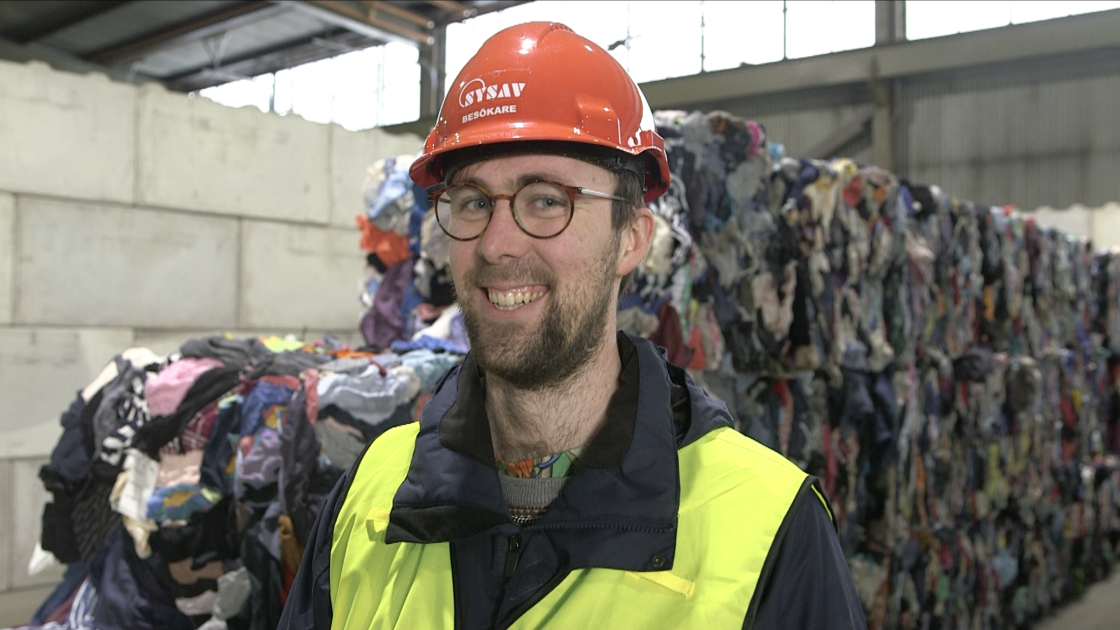Mar 2 2021
Many people recycle old textiles, but very few of them know that they are highly challenging to re-use, and usually end up in landfills.
 Edvin Ruuth. Image Credit: Lund University.
Edvin Ruuth. Image Credit: Lund University.
Scientists from Lund University in Sweden have now devised a technique that transforms cotton into sugar, which in turn can be converted into ethanol, spandex, or nylon.
Each year, about 25 million tonnes of cotton textiles are thrown out across the globe. A total of 100 million tonnes of textiles are discarded. In Sweden, a major portion of the material directly reaches an incinerator and turns into district heating. In other regions, clothes often end up in landfills.
“Considering that cotton is a renewable resource, this is not particularly energy-efficient,” stated Edvin Ruuth, a researcher in chemical engineering at Lund University.
Some fabrics still have such strong fibres that they can be re-used. This is done today and could be done even more in future. But a lot of the fabric that is discarded has fibres that are too short for re-use, and sooner or later all cotton fibres become too short for the process known as fibre regeneration.
Edvin Ruuth, Chemical Engineering Researcher, Lund University
The Department of Chemical Engineering at Lund University, where Edvin Ruuth works, has accumulated extensive knowledge in relation to the use of micro-organisms and enzymes to convert the 'tougher' carbohydrates found in biomass into simpler molecules.
This suggests that all waste materials varying from black liquor and biological waste to wood chips and straw can be converted into biogas, bioethanol and other chemicals.
At present, the researchers have even successfully disintegrated the plant fiber found in cotton—the cellulose—into smaller components. But no enzymes or micro-organisms are involved. Rather, in this process, the fabrics are soaked in sulfuric acid. The outcome is a dark, clear, amber-colored sugar solution.
“The secret is to find the right combination of temperature and sulphuric acid concentration,” explained Ruuth, who fine-tuned the 'recipe' along with doctoral student Miguel Sanchis-Sebastiá and professor Ola Wallberg.
Ruuth adds that glucose is a highly flexible molecule and finds several potential applications.
“Our plan is to produce chemicals which in turn can become various types of textiles, including spandex and nylon. An alternative use could be to produce ethanol,” he noted.
The researchers extract 5 L of sugar solution from a normal sheet, where each liter contains the equivalent of 33 sugar cubes. But it is not feasible to convert the liquid into a soft drink as it also includes corrosive sulfuric acid. One of the difficulties is to solve the intricate structure of cotton cellulose.
What makes cotton unique is that its cellulose has a high crystallinity. This makes it difficult to break down the chemicals and reuse their components. In addition, there are a lot of surface treatment substances, dyes and other pollutants which must be removed. And structurally, a terrycloth towel and an old pair of jeans are very different.
Edvin Ruuth, Chemical Engineering Researcher, Lund University
“Thus it is a very delicate process to find the right concentration of acid, the right number of treatment stages and temperature,” he added.
According to Ruuth, the strategy of hydrolizing pure cotton is not new as such. This approach was discovered in the 1800s. The challenge has been to turn the process attractive, effective, and economically viable.
Many people who tried ended up not utilising much of the cotton, while others did better but at an unsustainable cost and environmental impact.
Edvin Ruuth, Chemical Engineering Researcher, Lund University
A year ago, when Ruuth started producing glucose from fabrics, the result was a meager 3% to 4%. Currently, he and his collaborators have achieved nearly 90%. Upon completing the recipe formulation, it will be both comparatively inexpensive and simple to use.
But the logistics must work for the process to turn into a reality. At present, there is no standard way of handling and sorting different textiles that do not reach the usual clothing donation points.
Luckily, a recycling center in contrast to any other in the world is now being built in Malmö. Here, a sensor automatically sorts the clothing. A part of the clothing will be donated, rags can be useful in industry, and textiles that have adequately coarse fibers can turn into new fabrics. The remaining will be sent for district heating.
It is expected that the proportion of fabrics reaching district heating will be much smaller as soon as the technology from Lund is adopted.
The study was awarded financial support of SEK 6 million by the Swedish Energy Agency. The project manager is Lund University’s Faculty of Engineering, and Rise is part of the project.
Recycled cotton becomes new fabric
New method transforms old cotton into glucose. Video Credit: Lund University.
Journal Reference:
Sanchis-Sebastiá, M., et al. (2020) Novel sustainable alternatives for the fashion industry: A method of chemically recycling waste textiles via acid hydrolysis. Waste Management. doi.org/10.1016/j.wasman.2020.12.024.